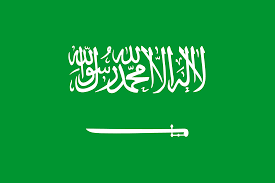Saudi arabia flag Colors Code hex, png svg
Saudi Arabia Flag History
The flag of Saudi Arabia has a rich history and symbolism, reflecting the nation’s cultural and religious heritage.
- Early History:
- The Arabian Peninsula has had various flags representing different regions and tribes over the centuries.
- In the early 20th century, as the Kingdom of Saudi Arabia began to unify under Abdulaziz Ibn Saud, a green flag with a white stripe and Arabic script started to be used.
- Modern Flag:
- The current flag design was officially adopted on March 15, 1973.
- The flag has retained a consistent design since the establishment of the Kingdom of Saudi Arabia in 1932, with minor adjustments to the script and the sword over time.
Colors and Meaning
- Green Background:
- Color: The flag has a green field.
- Meaning: Green is a traditional color in Islamic culture and is associated with Islam. It symbolizes peace, prosperity, and the importance of the Islamic faith to the country.
- Shahada (Islamic Creed):
- Text: The flag features the Islamic creed (Shahada) written in white Arabic script. The Shahada reads: “There is no god but Allah; Muhammad is the Messenger of Allah.”
- Meaning: The Shahada is a declaration of faith and signifies the Islamic foundation of the state. It emphasizes the central role of Islam in Saudi Arabia’s identity.
- White Sword:
- Symbol: Below the Shahada, there is a white, horizontal sword.
- Meaning: The sword represents justice and strength. It also commemorates the military successes and the establishment of the Kingdom of Saudi Arabia.
Flag Protocol
- The flag’s unique design, especially the inclusion of the Shahada, means that it is treated with great respect. It is not allowed to be flown at half-mast, and any damage or improper display is considered highly disrespectful.
Overall, the flag of Saudi Arabia is a powerful symbol of the nation’s religious faith, unity, and commitment to justice.
Guess the Flags Quiz
Sharing is caring 🤗

National Symbols 👇
- 🏁 National Flags
- 🦁 National Animals
- 🐦 National Birds
- 🌻 National Flowers
- 🌴 National Trees
- 🥭 National Fruits
- 🍹 National Drinks
- 👴 National Founders
- ☘️ National Emblems
- 🍲 National Dishes
- 🏛️ National Monuments
- ✍️ National Poets
- 🕌 National Mausoleums
- 🎺 National Instruments
- 🦸 National Heroes
- 📆 National Days

